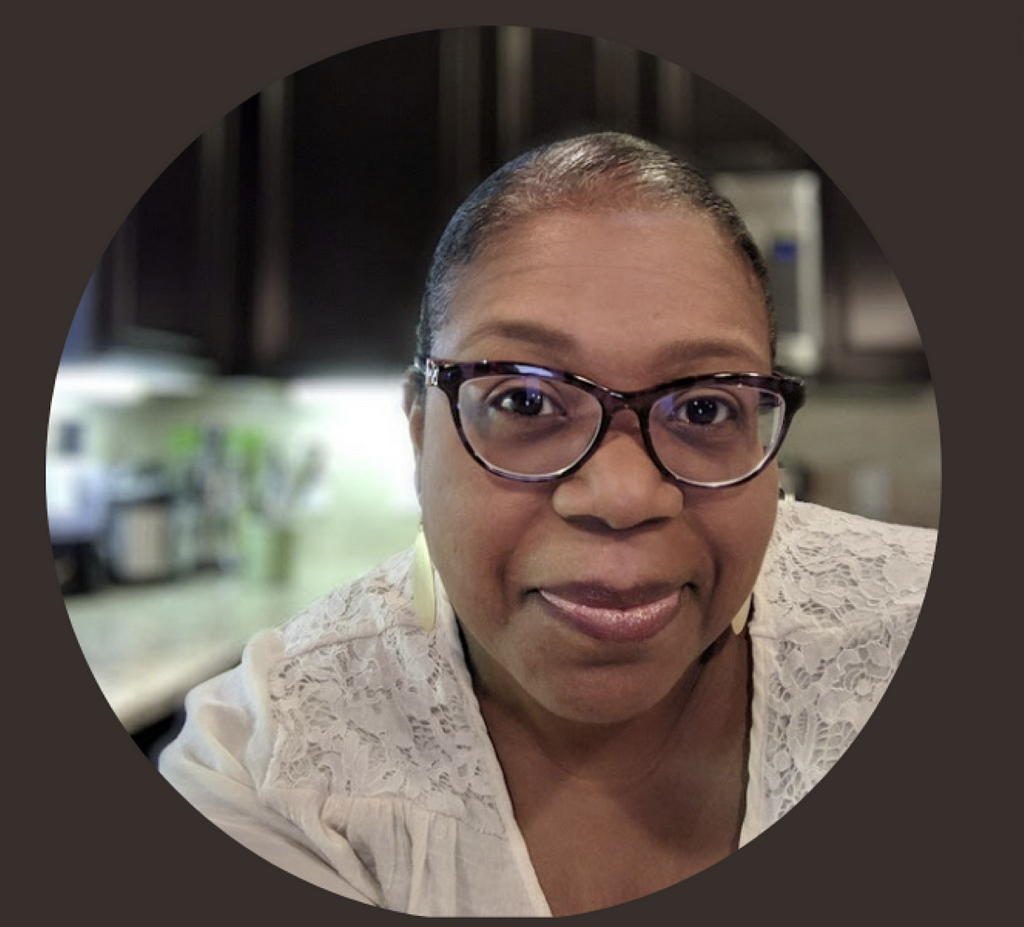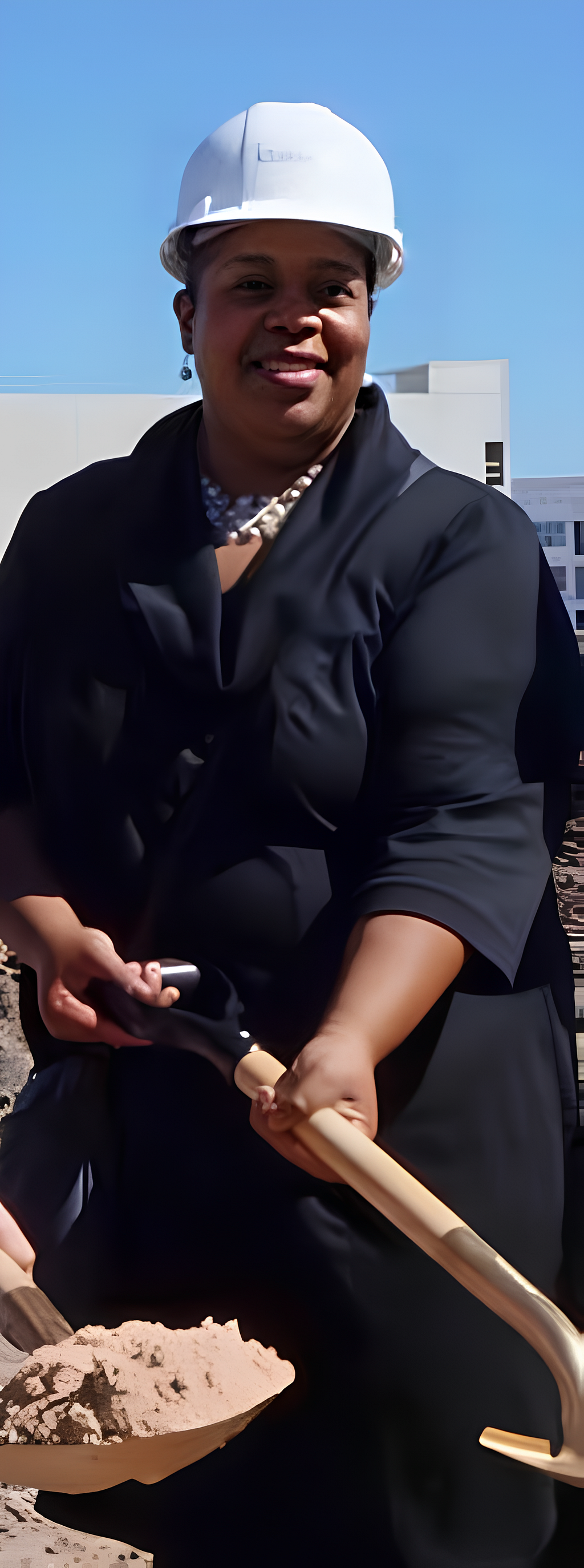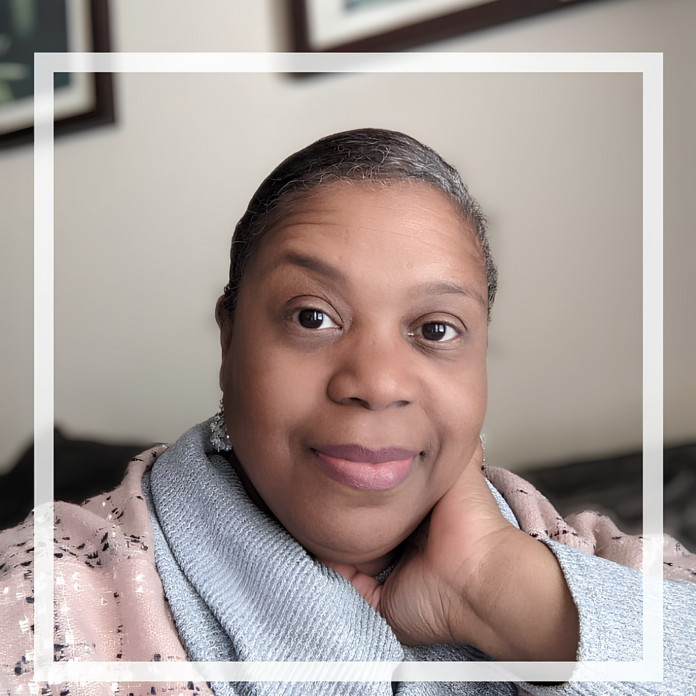Disability Inclusion In The Workplace: La Shawn Harrison Of 22:22 Design Consultants On How Businesses Make Accommodations For Customers and Employees Who Have a Disability
An Interview With Eric Pines
Recognizing that individuals experience spaces on multiple sensory levels, strategic design considerations can significantly enhance the workplace experience and contribute to talent retention. Thoughtful incorporation of key sensory elements fosters a more engaging and fulfilling environment for all.
As we all know, over the past several years there has been a great deal of discussion about inclusion and diversity in the workplace. One aspect of inclusion that is not discussed enough, is how businesses can be inclusive of people with disabilities. We know that the Americans With Disabilities Act (ADA) requires businesses to make reasonable accommodations for people with disabilities. What exactly does this look like in practice? What exactly are reasonable accommodations? Aside from what is legally required, what are some best practices that can make a business place feel more welcoming and inclusive of people with disabilities? To address these questions, we are talking to successful business leaders who can share stories and insights from their experience about the “How Businesses Make Accommodations For Customers and Employees Who Are Disabled “.
As a part of this series, we had the pleasure of interviewing La Shawn Harrison.
An award-winning facilities management professional with 26 years of experience helping global companies effectively manage, design, and develop workspaces, La Shawn Harrison thrives in diversity, advocates for accessibility, and works to introduce emerging professionals to the various aspects of the industry.
Thank you so much for joining us in this interview series! Before we dive in, our readers would love to “get to know you” a bit better. Can you tell us a bit about your ‘backstory’ and how you ended up where you are?
Sure. My professional journey began as a Designer within a commercial furniture dealership before transitioning into an Interior Design firm. There, my furniture centered focus shifted towards Tenant Design and Development, a specialized field dedicated to crafting spaces within office buildings. These spaces were tailored to meet the occupant’s requirements based on their tenant improvement budget outlined in the Lease Agreement. Acting as a key liaison with property management companies, I was entrusted with the task of conceptualizing and reconfiguring tenant spaces across multiple properties. Operating within tight timelines, precision was paramount, leaving little margin for error.
It was in the middle of the fast-paced environment of these projects that I discovered a profound passion for Accessibility Standards — legal guidelines ensuring that buildings and facilities are thoughtfully designed and constructed to accommodate individuals of all abilities. This newfound dedication to inclusivity became the cornerstone of my professional ethos, guiding my trajectory as I expanded my expertise into property management and ultimately, into facility management.
You are a successful leader. Which three character traits do you think were most instrumental to your success? Can you please share a story or example for each?
Three character traits that I believe were most instrumental to my success are:
Empathy
All new construction and modifications to commercial facilities are mandated to conform to accessibility guidelines outlined by the Americans with Disabilities Act (ADA) and the Texas Accessibility Standards (TAS). Regrettably, not all companies uphold these standards.
During my tenure at an expansive 11,000 square foot manufacturing facility, I was confronted with the stark reality of non-compliance firsthand. Upon arrival, it became evident that despite the bustling workforce occupying upper floors, the facility lacked adequate accessibility features. With only one passenger elevator in operation, often plagued by intermittent functionality, the situation was exacerbated by the presence of individuals with diverse physical challenges, including an associate reliant on a wheelchair and a number of expectant mothers.
The daily disparity between regulatory requirements and the facility’s accessibility shortcomings weighed heavily on my conscience.
Persistence
I persistently raised this concern with the site’s leadership on multiple occasions, citing legal obligations and inquiring about the feasibility of expediting additional passenger elevators already planned on the site’s construction schedule. Despite my consistent efforts, my appeals were frequently met with apathy or indifference. Nonetheless, undeterred by the lack of response, I remained steadfast in advocating not only for the needs of my colleagues, but also for my own.
Bravery
In a pivotal exchange with a Director, I articulated the significant ramifications of disregarding the law and underscored the potential legal repercussions that could directly affect him. As a result of this frank discussion, within three months an ADA Accommodations team was swiftly deployed onsite.
Can you share a story about one of your greatest work-related struggles? Can you share what you did to overcome it?
My most significant professional challenge revolved around my experience on a site plagued by substantial architectural barriers and structural deficiencies, as previously described. The confluence of these challenges took a toll on my physical well-being. Regrettably, despite concerted efforts, I found myself unable to sustain the physically taxing environment. Consequently, I faced the difficult decision of resigning from my position with the company.
What are some of the most interesting or exciting projects you are working on now?
An exciting project I am currently working on is collaborative effort to assist K-12 schools with creating activity based classrooms for students, integrating more ergonomic furniture, and implementing more functional workspaces for school staff members.
Fantastic. Let’s now shift to our discussion about inclusion. Can you tell our readers a bit about your experience working with initiatives to promote Diversity and Inclusion? Can you share a story with us?
One poignant example that hits close to home for me involves my brother, who is deaf. Over the past few years, he has faced various medical challenges requiring overnight hospital stays. It is disheartening to witness the stark reality of how inadequately equipped and unprepared many medical facilities are to cater to the needs of the deaf community. As a result, I have taken on the role of an advocate, tirelessly urging hospital staff to utilize interpreter devices, to communicate without obstructive face masks, to prominently display signage indicating the patient’s deafness, and to keep patient room doors ajar for heightened awareness of staff presence or entry.
This may be obvious to you, but it will be helpful to spell this out. Can you articulate to our readers a few reasons why it is so important for a business or organization to have an inclusive work culture?
Disability inclusion in the workplace extends beyond merely hiring individuals with disabilities. A truly inclusive workplace recognizes and values the diverse strengths of all employees, regardless of their abilities. It ensures that employees with disabilities, whether visible or invisible, have equal opportunities to thrive, learn, receive fair compensation, and progress in their careers.
Integrating disability inclusion into your hiring process is paramount. Companies that fail to prioritize disability inclusion risk missing out on highly qualified talent. If candidates encounter barriers during the application and interview stages or perceive a lack of inclusivity, they are inclined to seek opportunities elsewhere.
Companies with robust disability inclusion initiatives benefit from enhanced access to talent and improved employee retention rates. By providing the necessary support mechanisms, they empower their employees to excel.
When employees perceive a genuine commitment to building an inclusive workplace from leadership, they are more likely to respect and to remain loyal to the organization. Inclusive practices not only benefit individuals with disabilities, but also foster a culture of acceptance and support for all employees. I am not a gambler, but I’m willing to bet that employers with strong disability inclusion programs can anticipate increased engagement across their workforce.

The Americans With Disabilities Act (ADA) requires businesses to make reasonable accommodations for people with disabilities. For the benefit of our readers, can you help explain what this looks like in practice? What exactly are reasonable accommodations? Can you please share a few examples?
Certainly! Reasonable accommodations, as mandated by the Americans with Disabilities Act (ADA), refer to modifications or adjustments made in the workplace that enable individuals with disabilities to perform their job duties effectively. These accommodations are tailored to the specific needs of the individual and are implemented to ensure equal employment opportunities.
Examples of reasonable accommodations in the workplace include:
Physical Modifications:
- Installing wheelchair ramps or elevators to ensure accessibility for employees with mobility impairments.
- Modifying restroom facilities to make them wheelchair accessible.
- Providing an equal amount of furniture at an accessible height in public use areas.
Assistive Technology:
- Providing screen readers, magnification software, or speech-to-text programs for employees with visual impairments.
- Offering ergonomic keyboards, trackballs, or specialized input devices for employees with dexterity limitations.
- Implementing a voice announcement system in elevators for the visually impaired.
Overall, reasonable accommodations are designed to level the playing field for individuals with disabilities, allowing them to contribute fully in the workplace and participate equally in employment opportunities. These accommodations are tailored to the individual’s needs, ensuring that they can perform essential job functions effectively while maintaining their dignity and independence.
Aside from what is legally required, what are some best practices that can make a business place feel more welcoming and inclusive of people with disabilities? If you can, please share a few examples.
One of the best practices is to design with the end goal in mind. Inclusivity and accessibility should be embedded in any workplace design. Being able to enter a building seamlessly, locate a seat or work surface easily, and/or clearly move about the space is evidence these elements were part of the design intent and not after thoughts.
Can you share a few examples of ideas that were implemented at your workplace to help promote disability inclusion? Can you share with us how the work culture was impacted as a result?
I had the privilege of working for a company with a strong healthy lifestyle initiative and was equally cognitive of disability inclusion. The adjacent parking garage provided the ability to laterally move from the parking structure to a passenger elevator that transported you to the required office level. Ergonomic evaluations and accommodations were part of the cultural norm. Also, public areas such as conference rooms, dining areas, and telephone rooms offered ample space for circulation.

What are your “5 Things I Wish Someone Told Me When I First Started My Career”?
1. Prioritize End User Feedback:
Incorporating the voices of those who utilize the space daily is paramount in decision-making processes. Neglecting this crucial input may result in multiple design iterations or the creation of spaces that fail to enhance the user experience.
2. Human-Centric Design:
While technological advancements are tempting, it is imperative to ensure that the design of a space remains centered around the needs of its occupants. Failing to prioritize humans renders technological innovations meaningless.
3. Align Design with Functionality:
As someone driven by purpose, I passionately believe that the design of a workspace must support its intended function. Any deviation from this principle results in a missed opportunity to fulfill the space’s core purpose.
4. Uphold Accessibility Standards:
Compliance with Accessibility Standards is not a choice — it’s the law. Neglecting these standards not only violates the law, but also sends a clear message of exclusion to current and to potential employees.
5. Engage the Senses in Design:
Recognizing that individuals experience spaces on multiple sensory levels, strategic design considerations can significantly enhance the workplace experience and contribute to talent retention. Thoughtful incorporation of key sensory elements fosters a more engaging and fulfilling environment for all.
Can you please give us your favorite “Life Lesson Quote”? Can you share a story about how that was relevant in your own life?
One of the most memorable lines for me from the film Braveheart is, “Every man dies, but not every man truly lives.” This particular quote resonates deeply with me, as it encapsulates the essence of seizing life’s opportunities and embracing adventure. When I first heard Mel Gibson deliver these words on screen, it felt as though a dormant part of my being had suddenly awakened. It instilled in me a newfound sense of permission to fully embrace life, to pursue adventure relentlessly, and to cast aside the shackles of regret. It was this Life Lesson Quote that guided me to live and to volunteer in Brazil alone, to apply for a job out of curiosity, and to start my own business.
You are a person of enormous influence. If you could inspire a movement that would bring the most amount of good to the most amount of people, what would that be? You never know what your idea can trigger. 🙂
To empower others to identify their strongest gifts and then give that gift to others.
How can our readers further follow your work online? You can find me and follow me at: https://www.linkedin.com/company/22-22-design-consultants
This was very inspiring. Thank you so much for the time you spent with this. We wish you continued success and good health!
About the Interviewer: Eric L. Pines is a nationally recognized federal employment lawyer, mediator, and attorney business coach. He represents federal employees and acts as in-house counsel for over fifty thousand federal employees through his work as a federal employee labor union representative. A formal federal employee himself, Mr. Pines began his federal employment law career as in-house counsel for AFGE Local 1923 which is in Social Security Administration’s headquarters and is the largest federal union local in the world. He presently serves as AFGE 1923’s Chief Counsel as well as in-house counsel for all FEMA bargaining unit employees and numerous Department of Defense and Veteran Affairs unions.
While he and his firm specialize in representing federal employees from all federal agencies and in reference to virtually all federal employee matters, his firm has placed special attention on representing Veteran Affairs doctors and nurses hired under the authority of Title. He and his firm have a particular passion in representing disabled federal employees with their requests for medical and religious reasonable accommodations when those accommodations are warranted under the Rehabilitation Act of 1973 (ADA). He also represents them with their requests for Federal Employee Disability Retirement (OPM) when an accommodation would not be possible.
Mr. Pines has also served as a mediator for numerous federal agencies including serving a year as the Library of Congress’ in-house EEO Mediator. He has also served as an expert witness in federal court for federal employee matters. He has also worked as an EEO technical writer drafting hundreds of Final Agency Decisions for the federal sector.
Mr. Pines’ firm is headquartered in Houston, Texas and has offices in Baltimore, Maryland and Atlanta, Georgia. His first passion is his wife and five children. He plays classical and rock guitar and enjoys playing ice hockey, running, and biking. Please visit his websites at www.pinesfederal.com and www.toughinjurylawyers.com. He can also be reached at eric@pinesfederal.com.
Disability Inclusion In The Workplace: La Shawn Harrison Of 22:22 Design Consultants On How… was originally published in Authority Magazine on Medium, where people are continuing the conversation by highlighting and responding to this story.


